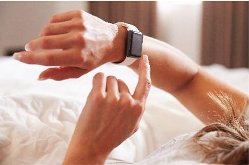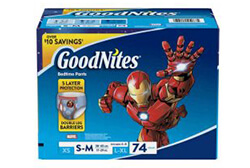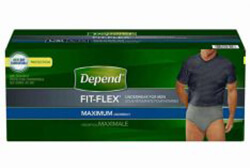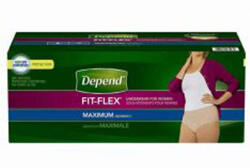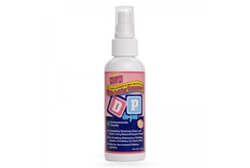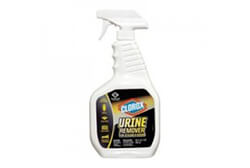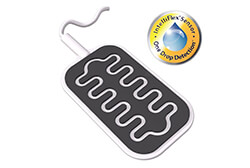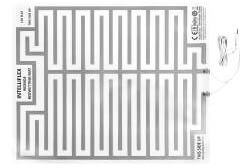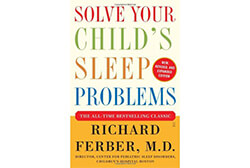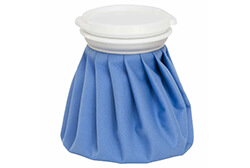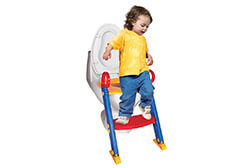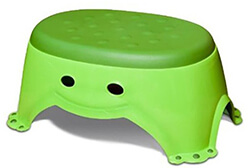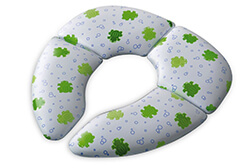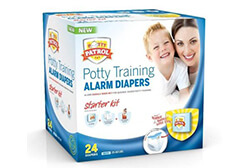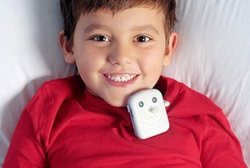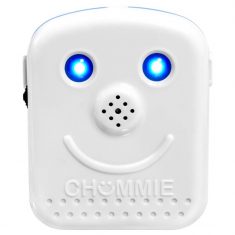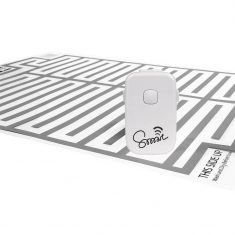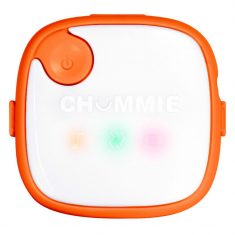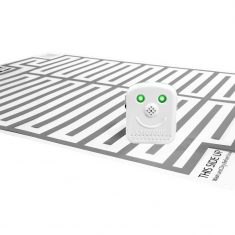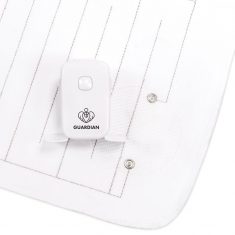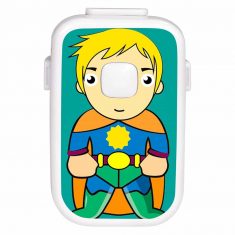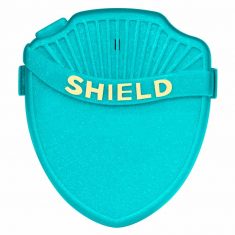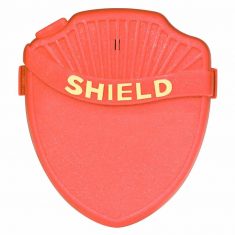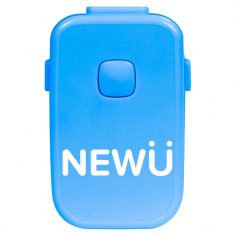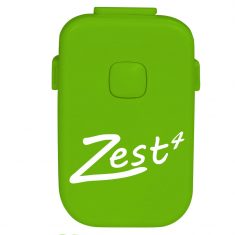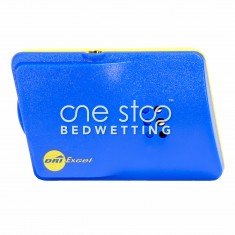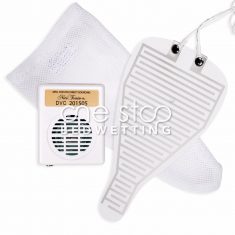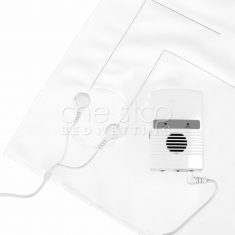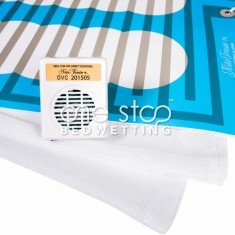

Why buy from One Stop Bedwetting?
Bedwetting Alarms
A Bedwetting alarm, also called enuresis alarm is the perfect solution to help your child stop nighttime wetting. The alarm is designed to wake up children on detecting urine so that children can get up dry every morning. Parents can help their child overcome nocturnal enuresis by educating themselves better about the types of bedwetting alarms and how alarms work Read below for important considerations when choosing a bedwetting alarm and tips for treatment success.
How Bedwetting Alarms Work
A bedwetting (enuresis) alarm is a behavior modification system which trains the users brain to detect a full bladder when they are asleep at night so the bedwetter can wake up and empty their bladder in the bathroom. Bedwetting alarms can be used by children, teens and adults for the treatment of nocturnal enuresis (nighttime bedwetting). The bedwetting alarm system comprises of two parts, a urine or moisture detection sensor and an alarm unit.
The sensor is securely placed outside the underwear or pajama at the point of urination, where it would detect the first drop of urine. The alarm unit is placed on the pajama top or on the t-shirt top where it can be heard by the user when asleep. Most alarm units are programmable and use a variety of sounds, light and vibration to wake up bedwetters. Alarm units are generally operated by AA or AAA batteries, so they are safe to use. The alarm unit is connected to the urine detection sensor through a cable which runs below the t-shirt.
When the sensor detects the first drop of urine, it passes a signal to the alarm unit. In response, the alarm unit plays back a series of loud alerts and sets of strong vibrations. Some bedwetting alarms also use lights in addition to sound and vibration. The combination of these tactical alerts wakes up the user so they can get up and empty their bladder by urinating in the toilet. When used for several weeks or months, the user will learn when their bladder is full and will automatically wake up on their own to use the bathroom. Eventually, a few months later, the brain-bladder connection is established so that they can start sleeping dry throughout the night.
This process of training the brain to communicate with the bladder and hold urine is called behavior modification. Although slow at first, behavior modification starts showing visible results within a few weeks of use. Most alarms use a three step Detect-Alert-Train approach to stop bedwetting. How bedwetting alarms work and how much time a successful treatment will take usually depends on the age, gender and family history of the user. In most cases, children can stop bedwetting in a few months. Teenagers take a bit longer. Also, more boys wet the bed compared to girls. Genetics, constipation and stress can impact bedwetting in children and teens.
- Bedwetting alarms are clinically proven to stop nocturnal enuresis (nighttime bedwetting) in children, deep-sleepers and teens. They are also very effective for the treatment of adult bed-wetting
- Bedwetting alarms are extremely safe and highly effective solutions. Of all the available bedwetting solutions and treatment options, bedwetting alarms present the highest success rate for children and deep sleepers.
- Unlike prescription medications, a bedwetting alarm has no side effects. An alarm treatment can take several weeks to months, but they have a very low relapse rate (bed wetting starts again after successful treatment)
- Because of the high success no side effects, many doctors and pediatricians often widely recommend the use of a bedwetting alarm as the first line of treatment to stop nighttime wetting in children and deep sleepers.
- A bedwetting alarm is a medical device which can be purchased without prescription, over the counter. The purchase of a bedwetting alarm is an FSA eligible expense and is covered by most health insurance plans.
Types of Bedwetting Alarms
There are two types of bedwetting alarms available; wearable and bedside bedwetting alarms. The principle of operation is same in both cases, the difference lies in how the sensor and alarm unit are placed on the user.
Wearable Bedwetting Alarms: These are the most popular types of alarms commonly used by children and deep sleepers under the age of 12. The system includes a urine detection sensor and alarm unit. The alarm unit is clipped near the shoulder where it can be heard and the sensor is placed outside the underwear at the point of urination where the first drops of urine can be detected. The alarm and sensor are connected by a cable which is placed below the t-shirt. The alarm unit uses sound-light and vibration alerts to awaken the user. The two most common types of sensors are clip sensors and flat sensors. Clip sensors are clipped outside the underwear. These sensors are made from plastic. Flat sensors are made from soft silicone and taped outside the underwear. They generally offer more comfort and have a larger urine detection area than clip sensors. Clip sensor based bedwetting alarms are usually cheaper.
Popular flat sensor based bedwetting alarms include Chummie Premium and Chummie Elite.
Popular clip sensor based bedwetting alarms include Smart, Shield Max, Shield Prime, NewU and Zest.
Bedside Bedwetting Alarms: Widely recommended for teenagers and adult bedwetters, these systems includes a urine detection mat and alarm unit. The user sleeps directly on the large mat and places the alarm on the bedside. Since there are no wires on the body, wearable bedwetting alarms offer more comfort and a more natural sleep. The urine detection mat is made from either cotton fabric or a special plastic compound. Each material can support a large user weight, usually over 200lb. The alarm unit uses sound-light and vibration alerts to awaken the user.
The Guardian alarm is a popular when it comes to selecting a cotton fabric mat based bedwetting alarm.
Popular plastic mat based bedwetting alarms include Chummie Pro and Smart Bedside.
- The two types of bedwetting alarms are wearable alarms and bedside alarms. Wearable alarms are recommended for children and deep sleepers. Bedside alarms are recommended for teenagers and adult bedwetters
- Clip and flat sensors used in wearable alarmsare easy to maintain. After a bedwetting event, the sensor should be cleaned dry for immediate reuse. These sensors are dry and ready to use in under 1 minute
- Cotton bedwetting mats used in bedside alarms are machine washable and dryer friendly. After a bedwetting event, they should be washed and dried prior to reuse. These offer most comfort at night for bedwetters
- Plastic bedwetting mats used in bedside alarms can be simply wiped dry after a bedwetting event. These mats dry in seconds and can be reused immediately so the user can quicklygo back to bed
- Every user has a different need. Before you invest in a bedwetting alarm, its a good idea to compare bedwetting alarms side by side. Check out features and reviews so you can decide what's the best bedwetting solution for you
Bedwetting Alarm Features
One of the main causes of bedwetting in children is a combination of deep sleep and over production of urine. When you buy a bedwetting alarm consider few features that can help your child stop bedwetting. A bedwetting alarm (enuresis) alarm helps establish a brain bladder connection so the user can wake up on time rather than wet the bed. Before you invest in an alarm, here are important considerations you should take into account.
Comfort: Of the two types of sensors, bedside bedwetting alarms offer more comfort than clip of flat sensors. Bedside alarms use mats which slice below the bedsheet so the user doesn’t feel any sensors on the body and they can move in bed freely. Flat sensors typically are more comfortable than clip sensors as they are made from soft silicone unlike clip sensors which are made of plastic.Urine Detection: Flat sensors have a significantly larger urine detection area compared to clip sensors and hence less likely to miss a bedwetting event. Both clip sensors and flat sensors detect the first drop of urine and respond immediately to bedwetting. Bedside alarms that use mats require a larger wetting area and respond slower than wearable alarms.
Alarm Alerts: It is generally preferred to get an alarm with sound-light-vibration alerts. These are more advanced alarms which have loud tones and the additional tactical alert will ensure that even deep sleepers wake up to the alarm on wetting the bed.
Number of Tones: Many advanced alarms come with more than 1 tone. You can select tones or they cycle through tones automatically. This is done so that the user doesn’t tune out or get used to any one tone during treatment.
Reliability: The sensor constantly comes in contact with urine. Sensors with exposed metal wires and parts may end up getting corroded. It’s best to use a sensor with no exposed metal contacts like the InteliiFlex sensor in Chummie alarms for long treatment.
Nightly Reuse: Most bedwetters wet several times at night. Each time the sensor is to be reused, it should be cleaned and dried. Flat sensors can be shaken in hand to dry them and reuse immediately. Clip sensors may require additional time to dry. This is especially important when children wet at late hours of the night.
- One of the most important feature to look is how comfortable the alarm for your child, if your child sleeps on stomach or they are a restless sleeper, then its best to get a bedside bedwetting alarm
- Among the two types of alarms, wearable or bedside, decide what’s best for your individual needs. You can purchase a Comfy-Armband in addition to your alarm for extra comfort while using a waerable alarm
- Get a loud alarm. Nearly all of the alarms available on this store have a db level (measure of sound) of 80-85 which is loud enough to wake a deep sleeper and train them to wake up when the wet the bed
- Look for vibrating mode in alarm. Alarms which vibrate can be operated discreetly so your child can use them on sleepovers, camps and vacations. Discreet modes are handy when multiple siblings share the same room
- Sensors detect urine and are the important part of alarms. Select the right type of sensor based on comfort and urine detection area. You can check out the best bedwetting alarm and read bedwetting alarm reviews before you choose one that’s right for you
Bedwetting Alarm Treatment Success Tips
Bedwetting Alarms (Enuresis Alarms) are very effective in the treatment of nighttime bedwetting and in most cases offer a permanent solution to stop bedwetting. It is important to use the bedwetting alarm for 14 consecutive dry nights to get best success rate and at least 8 to 12 weeks to be stop bedwetting completely. Positive reinforcement, patience and persistence are necessary for a successful treatment with lasting results. Talk to your child as theu may resis using an alarm. Make them understand that they are not alone and that the alarm will help them deal with and stop bedwetting. Chose a bedwetting alarm carefully.
Bedwetting Alarms for Children: Most young children are deep sleepers. As a child gets older, the treatment may take longer. The first few weeks, children may not respond to the alarm when it goes off at night. Parents should wake up their child on hearing the alarm and help them empty in the toilet, change soiled clothing and return to bed. Waking up your child soon is important to the treatment progress. Children will usually start to wake up within 2-3 weeks and the average treatment can take 8 to 12 weeks. There are many alarms to select from. Choose your alarm from bedwetting alarms for boys, bedwetting alarms for girls, bedwetting alarms for deep sleepers and bedwetting alarms for special needs kids. We recommend wearable alarms for children so they can use the alarm with or without bedwetting diapers and wetting pants.Bedwetting Alarms for Teenagers: Most teenagers that wet the bed have been wetting since childhood. Alarms can help teenagers too and with high success rate. Many teens will wakt up on their own when they hear the alarm. If they don't, parents should helpthem wake up. Teenagers may take a bit longer than children to stop wetting the bed. Teens will usually start to wake up within 1-2 weeks and the average treatment can take 12 to 16 weeks. There are many alarms to select from. Choose your alarm from bedwetting alarms for teen boys and bedwetting alarms for teen girls. We recommend wearable and bedside alarms for teens
Adult Bed Wetting Alarms: Alarms will help adults realize the need to use the batheoom when they have wet the bed. They can also help adult bedwetters wake up to a full bladder. They are not designed to stop adult bed wetting. Choose your alarm from adult bedwetting alarms for men and adult bedwetting alarms for women. We recommend bedside alarms for adult bedwetters
- Treatment takes time. Do not give up hope or stop the treatment in between. The first few weeks are the hardest
- Some bedwetters jsut take longer to respond to the alarm than others. This just means that they are either deep sleepers or their body is taking a little extra time to adjust to the alarm
- You don't have to continue to use the alarm once you have achieved success. Stop using the alarm once you have 14 consequtive dry nights
- Use waterproof mattress pads tp protect your expensive mattress and ebd-sheets from urine stains and spills
- If you need assistance with your alarm or have questions, feel free to contact one of our bedwetting specialists. We are here to help you
"If you are looking for ways on how to stop bedwetting, a bedwetting alarm is the answer. We successfully used the alarm on our 8 year old who stopped wetting in 6 weeks!" - April
"Bedwetting at age 6 can be frustrating for both parent and children. Thankfully our bedwetting alarm addressed the problem from day one and we never looked back. Incredible device." - Stacie
"For all parents of bedwetters, get a bedwetting alarm. it will save you time, money and will boost your child’s self-confidence. Our bedwetting alarm worked well and yours will too." - Gloria

NEED HELP PLACING AN ORDER?
Call us toll free: (800) 230-6775 Mon - Fri 9am-6pm PST. email: [email protected]







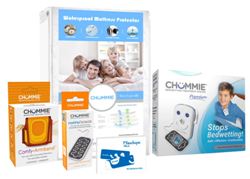
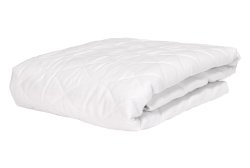 Our #1 Top SellerIdeal for Daily Use
Our #1 Top SellerIdeal for Daily Use Premium Quality BeddingSoft and Comfortable
Premium Quality BeddingSoft and Comfortable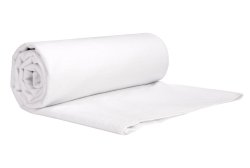 Premium Quality BeddingLarge Urine Absorption
Premium Quality BeddingLarge Urine Absorption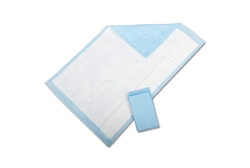 AFFORDABLE PRICECHANGE DAILY AS NEEDED
AFFORDABLE PRICECHANGE DAILY AS NEEDED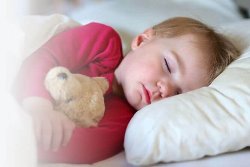
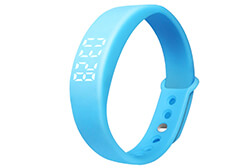 Sleek, Stylish and Affordable Watch
Sleek, Stylish and Affordable Watch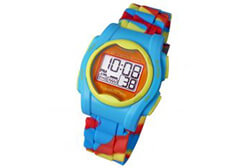 Multi-Function Watch with Numerous Features
Multi-Function Watch with Numerous Features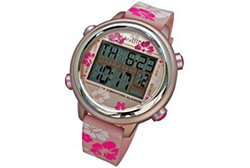 Recommended watch for teens and adults
Recommended watch for teens and adults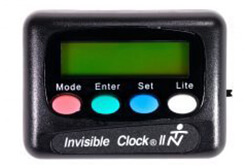 Perfect for medication and other reminders
Perfect for medication and other reminders